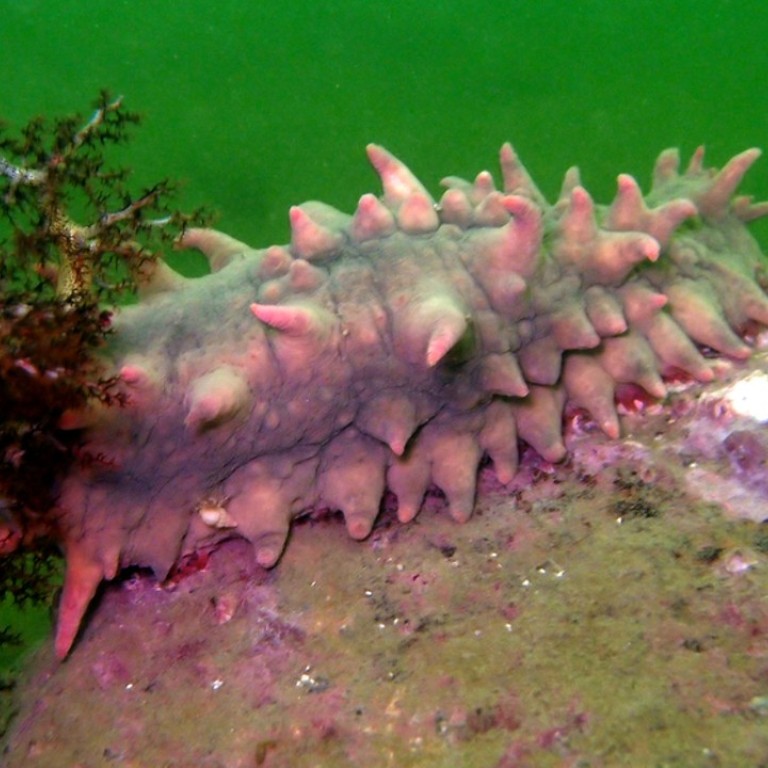China's Insatiable Appetite
"Between 1996 and 2011, the number of countries supplying the Chinese sea cucumber market expanded from 35 to 83. Over 90% of the world’s tropical coastline now lies within countries that export sea cucumbers to Hong Kong, a large proportion of which are traded on to mainland China."
"In many cases, finance extends from importers in China all the way through the supply chain to individual catchers."
Michael Fabinyi, Kate Barclay, chinadialogueocean
"The sea cucumber has been used in traditional Chinese medicine to treat everything from high blood pressure and fatigue to constipation and impotence."
"The sea cucumber is low in fat and cholesterol while being high in protein and B vitamins. It is also rich in antioxidants."
thespruceEats
 |
| In China, sea cucumbers are considered a luxury food and are used to treat kidney problems and impotence. Some species can sell for more than US$600 per kilogramme or 3,765 yuan (Photo: treetstreet/Thinkstock) |
The creatures have a reputation in Asia for their nutritional value, along with their unusual texture; believed to have medicinal properties to treat medical conditions ranging from arthritis to impotency. There are, needless to say, many other wild creatures that Chinese cuisine values for their purported pharmaceutical properties, in a long tradition of Chinese medicine. Chinese are known to pay astronomical sums for creature delicacies to which they ascribe miraculous health properties.
It is why donkey populations worldwide have declined, through export to China in such unsustainable numbers as to threaten the species, from Brazil to Pakistan. It is why wild animals such as rhinoceros, tigers, antelopes, snakes buffaloes, deer, bear, sharks, elephants, monkeys ... the list goes on ... and on -- are similarly under threat. Threatening the very existence of many animals whose numbers are increasingly precarious.
 |
Because of the huge popularity of sea cucumbers, the oceans have been literally vacuumed of their presence around China, leaving the animals to become a rarity in their wild state because of the demand increase of the last several decades. Natural stocks of local species have been depleted. Leading to aquaculture, raising sea cucumbers in pens or ponds. Others are raised in the sea in conditions approximating their natural habitat, and these are considered to be free-range.
The local economy on the Liaodong Peninsula has undergone a transition where tidal flatlands have been transformed to a patchwork of ponds, the entire area so huge, they appear in satellite maps. Fed by ocean water, the ponds are seeded with the young and in a year's time they'll have grown sufficiently large to harvest. Huge structures that breed sea cucumbers destined for the ponds are located further inland.
"People here all rely on this", explained Liu Aiqing, while weighing sea cucumbers pulled by divers from a nearby pond. With a value of over $8 billion annually, sea cucumbers are now the most valuable of farmed sea products in China, according to Bao Pengyun, marine biologist who helped contribute to the development of the industry in China through his research at Dalian Ocean University.
The animals feed off the rocks and sand where they thrive while purifying surrounding water. Total eradication of the creatures would have a devastating result through the food chain, from either end. Some estimates place 70 percent of the world's edible species of sea cucumbers as over-exploited, from the South Pacific, to the Mediterranean, to the Gulf of Mexico.
As far as Mr. Bao, the marine biologist is concerned, little difference exists between sea cucumbers raised in pens or those raised in free range, and those from the wild. "Very much the same", he insists. "The difference is tangible", contends Mou Jie, a woman who set out with friends to drive up the coast to take a ferry to deposit her on Guanglu, where she plans to buy the delicacies.
 |
| South China Morning Post |
Sea cucumbers from cold waters grow more slowly than others, taking three years to reach maturity, rather than one, giving them the reputation of being more nutritious. Whether fresh, partially processed or dried, wild sea cucumbers are priced at two to three times the penned versions. Dried, the most expensive can cost close to $1,000 a kilogram.
And then there are those who claim sea cucumbers to be flavourless, with the texture of cartilage or rubber. Actually, they have little taste of their own; like another Eastern food product that some swear by and others swear at -- tofu -- sea cucumbers pick up flavour from whatever it is they are cooked in, or with. Plucked alive from the sea, lightly blanched, then bathed in a sauce of garlic, cilantro and chili oil, their taste then assumes that of a rubbery piece of cartilage flavoured by a sauce of garlic, cilantro and chili oil.
Takers, anyone?
 |
| Sea Cucumbers are being eaten to death : National Geographic |
Labels: China, Cuisine, Exotic, Medicinals, Omnivoerous, Taste, Tradition, Wild Animals

0 Comments:
Post a Comment
<< Home